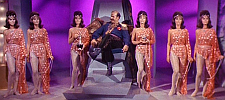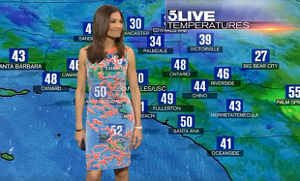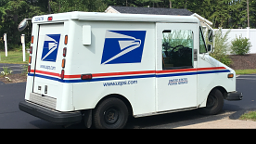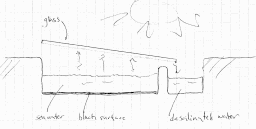39 Startup Company Ideas
Over the last decade or so I've put myself in a mindset where, when confronted with an everyday problem or frustration, I pause to consider the opportunities for a marketable solution or business opportunity.
This actually happens a lot. So I'll try to keep an active list of them here.
All of these are pretty reasonable, and none fit the goofy startup trends we see today. So no internet connected juicers, no IoT Fidget Spinners, no cryptocurrancy for tulips.
Perhaps you'll find these entertaining. If you are interested in starting a company that does something described here, give me call.
-

Intelligent Traffic Signals
Recent developments in transportation have included the electric car, driverless cars, and ride sharing. The missing piece is how to address traffic congestion.
I describe a powerful solution here: Intelligent Traffic Signals.
-

Blockchain Technology Based Electronic Voting System
Even after 240 years, the United States is not that good at voting. We've seen examples of incompetence, confusion, errors, and fraud. We've seen electronic touch screens switch votes, people physically stuffing ballots, buses shipping people to vote across state lines, voting multiple times, and dead people voting. And this is regardless of the technology; whether electronic, scanned paper, punched paper, whatever.
"This is the only country where a death certificate is valid voter ID." — Dennis Miller
So there is a need for an efficient, robust, reliable voting system.
Blockchain technology can be used as the foundation for a voting system that is publicly verifiable in multiple ways without revealing peoples' actual votes. Voter ID and voter eligibility would be part of the package, as well as secure and verifiable delivery of the results.
Update 2022: Stuff happens. It turns out that, while US elections are really messed up, this is probably not the best approach. So I'm recalling this one.
Counting ballots is a fundamentally simple operation. But the real live political incentives are in adding mechanisms for fraud with the excuse that they're assisting otherwise disenfranchised voters.
I now believe that the right solution is to avoid voting machines entirely:
- Paper ballots
- Ballots are scanned in at the polling place with off-the-shelf document scanners
- When the polls close, the ballots and scanned images are signed, sealed, delivered.
- The scans are publicly available, and an open source app reads the image files and tabulates the result.
Fully open and transparent. And not much of an opportunity for a startup.
-

Wall Wart Eliminator
("Wall wart" is an engineering colloquialism for those dangly tangly AC adaptors that almost every electronic product uses.)
Do you know why wall warts are so ubiquitous? As opposed to having the power supply built-in to the product. It's certainly not for product design elegance.
UL requirements make testing and approval of AC powered products a very slow and expensive process. So wall warts are simply a way to get a product out the door quickly and inexpensively. The company that manufactures the wall wart has UL approval, the new product ships with an off-the-shelf wall wart.
And unfortunately the customer now has to deal with a mess of incompatible wall warts, subject to loss, or connecting the wrong one, spaghetti wires all over, difficulty fitting into an outlet strip... just a big mess.
What's needed is a low-power standard for small electronic products that currently use wall warts, such as disk drives, modems, networking hubs, battery chargers, audio gear, electric toothbrushes, etc.
- A simple plug that's small, convenient, and robust.
- Use 12V to be compatible with automobiles. (Call it a "new age cigarette lighter plug".)
- UPS with a simple battery.
- Some smarts to handle current limits or simple communications.
USB connectors are sometimes used for their power connection, but they do not supply enough current. And USB is a bidirectional standard; we really need a single direction connector from power supply to power consumption.
Or UL Labs could be fixed. Not holding my breath.
Update 2022: Not much. USB is becoming a sort of ad-hoc standard for this, but it's not optimal.
-

iTunes for Classical Music
Have you tried listening to any sort of classical music on iTunes? The experience is awful. There's no concept of a piece having multiple movements, iTunes is unable to present the title of the piece in a readable format, navigation is near impossible.
It's bizarre to see classical music fans swear so much.
So this would be an app that fixes all those problems and optimizes the music listening experience for classical music.
An upside: If it gets popular, Apple might acquire the company for some ridiculous amount of money.
Update:
An article in the NY Times, In Streaming Age, Classical Music Gets Lost in the Metadata acknowledges the problem, and mentions startups Idagio and Primephonic. And then Apple acquired Primephonic in 2021.
-
Tide-Powered Deep Sea Desalination Machine
Reverse Osmosis desalination plants need a lot of power, mostly to pump water up to the high pressure levels required, about 900psi for seawater.
One idea is to take advantage of the sea's natural water pressure at greater depths. About 2000 ft below sea level should do it. But that's not enough, there needs to be a pressure difference, and to depressurize the output side by pumping the water up and out.
Tidal power could be harnessed both to pump the desalinated water out and to increase the water pressure so the machine doesn't have to be sunk so deep.
I like the idea of a self-powered device sitting below, and a pipe coming up out of the ocean supplying drinking water.
(I'm just throwing this out as a quickie; I don't know anything about this field.)
-
Tiny Personal Device
A small personal device that can perform a limited number of useful functions: 'finds your iPhone, functions as a key for identity and secure operations, key for electronics locks, ...
Place it on your keyring... which I assume will not get technologied away for a couple decades. (Unless that's another idea for a startup.)
Update 2022: The Apple Watch is probably the best solution here.
-
Facebook Meme Repellant
"A lie can travel half way around the world while the truth is putting on its boots."
— Mark Twain (probably)Facebook memes can efficiently propagate lies faster than just about anything. They are terse, have visual impact, leave an impression, and drop down the timeline and out of sight before anybody can debunk them. Which is why you often seem them weaponized for political purposes.
This is a crowd source system that catalogs memes and offers debunking assistance.
Say one of your idiot Facebook friends posts a nasty meme chock full of falsehoods cooked up by strategic political operatives. It's a lot of work to research the source of the meme, find the specific errors in the information, and post a reasonable debunking worded in such a way you don't start a race war.
So this would include a Facebook app where you click on the offending meme, the app grabs the image and/or reference, sends it to a server where we cross check it against a database, return a set of debunking information, references, Snopes articles, etc., and also a few recommended reply texts applicable to various Facebook relationships.
The database would be maintained by people who care about these things with a set of curators. If a user clicks on a meme that can't be found in the database, the crowd is alerted.
The system could even track the propagation of memes introduced into the Facebook ecosystem.
Update 2023:Twitter/X has implemented a better approach.
-
21st Century Black Box
Finding the flight recorder after an aircraft crash is always a major drama, hunting down the locator beacon before it runs out of power.
Instead, create a modern black box that continuously uploads flight data to the cloud.
(I'm just throwing this out; I don't know anything about this field.)
-
Retail Kickstarter Stores
Open up a franchise of Kickstarter/Indie-GoGo retail stores. (Since Radio Shack went bankrupt, you could probably lease their stores for cheap.)
Kickstarter products could be displayed, and demonstrated. Customers could see them in real life and try them out. And folks doing Kickstarter projects could get live customer reactions and input.
For some reason board games are very popular on Kickstarter. So a section of the store would be devoted to board games.
The store could include a studio section with equipment for taping Kickstarter videos (with the ukulele music in the background).
And of course a special section for perpetual motion machines. (Heh-heh...)
-
iTunes for Sheet Music
Musicians have always needed access to sheet music. And they'll often get by with minimal versions -- "'Got a gig, need to get the chords down."
Jazzers have always had the Fake Books, and the Real Books. In the early 90's the Usenet groups published "tabs"; files including chords and lyrics and solos in a tabulature format. The Usenet tabs were gathered, expanded, and are now published on web sites.
Several problems: these sources are rarely accurate, the composer receives nothing, and sites like Ultimate Guitar add so much advertising, features, and popup crap that the material is unusable.
So there's an opportunity for accurate sheet music, composer approved, with performance notes, delivered digitally for a minimal price, like iTunes, with the composer receiving a royalty. Or a subscription service, again like iTunes.
-
Modular Audio Signal Processing System
I'm currently doing this. Musicians use an awful lot of electronic devices (preamps, compressors, filter, echoes, equalizers, etc.). And connecting up so many devices results in a ton of problems, problems electrical, mechanical, usability, dangly AC adaptors, spaghetti wire, etc.
A modular platform specifically designed for musical audio signal processing eliminates all those problems, supports an excellent user experience, and is efficient to manufacture.
-
New Music Format
The consumption side of the music industry has found itself without a business model. Streaming is popular, but pennies-per-megabyte is not a workable busineess.
People pay roughly zero for music in a downloadable format. Why? Because music is culture, and downloadable bits are devoid of culture.
In my article A New Business Model for the Music Industry I describe a simple music delivery format that fully supports the cultural elements of music.
(Admitedly the article takes a long time to get to the point; I need to rewrite it.)
-
21st Century Pipe Organ
The visceral experience of a physical pipe organ is unmatched. But pipe organs are crazy expensive to purchase, install, and maintain, so we are seeing fewer pipe organs in churches, theaters, and halls.
I'm currently writing up the details, but this would be an actual pipe organ with modular construction, so it can be built incrementally over time, some ranks with real pipes, some synthesized, wireless links, intelligent airflow management.
'Details soon...
-
Deluxe Commuter Rail Car
Mass transit in the Bay Area is pretty horrible. CalTrain, which runs the line from San Francisco down to Gilroy, is underused, has dilapidated old cars, and loses money.
That's unfortunate because mass transit has the potential to be thoroughly enjoyable. Take Disneyland for example, where people are eager to wait an hour in line for what is effectively mass transit, except that it doesn't actually take you anywhere.
So if you want to make mass transit popular, get some Disney imagineers to design the system.
On a smaller scale... Imagine making a deal with CalTrain to add a few new cars. And do them up really nicely; cafe seating, hip decorations, snazzy lighting, on-board wifi. Serve espresso and pastries in the morning, locally brewed beer and wine in the evening.
Market it as the trendy place to be seen for networking and mingling. Have a couple news stories about startup deals made on the car. And "Cougar Night".
It can be very profitable and improve ridership.
-
Hitchhiking App
Bring back hitchhiking! Like Uber, but free, revenue from ads.
Weirdly enough, the app could fix the two major problems with hitchhiking; catching a ride from a crazy and picking up a crazy for a ride.
-
Mutual Fund Tool
Mutual fund prices are updated daily, some time after the market closes. Any given fund could easily end up or down 1 or 2 percent. And it's really dishearting to sell some shares only to find out that the price dropped that day.
I wrote a program that predicts the value of a mutual fund before close by charting the holdings of that fund during the day. So you can run it near close and see pretty accurately how the funds will perform. 'Works well.
-
Meeting Presentation App
I've been through an awful lot of meetings where one or more people are making slide presentations. And invariably, way too much time is spent setting up the presentation, finding a cable to connect the laptop to the video projector, finding the file on the laptop, or on the USB drive, cranking up PowerPoint or Keynote, incompatibilities between the two, switching from one laptop to another, working the clicker, accidently revealing your porn collection, and so forth.
A meeting presentation app could solve this. Upload your presentation to the app (cloud, whatever) and go to the meeting. At the meeting there's only one laptop already connected to the projector, and it's running the app. When it's your turn to present, the app on your phone sends the presentation to the laptop and you're good to go. Clicker controls are on your phone.
There would be tools to share the material (or not). Automatically handle connections to remote sites, so folks in the field can also see the slides. For larger meetings, instead of passing around a microphone, use the phone's mic to ask questions. Or use the phone app to text qeustions.
-

3-D Printer and Software Prints a Custom Sex Doll
I don't really need to describe this any further...
(Star Trek, Season 2, Episode 8, I, Mudd)
-
A Franchise of Local Music Websites
I've always been a big fan of progressive rock (King Crimson, Yes, Genesis, etc.). And I've always been a big fan of supporting the local music scene. Back in the early days of the interwebs, I built BayProg, which is probably the first genre-specific web site for local music. It's designed for the music fan and features local concerts, stores, bands, resources, and so forth.
I haven't monetized BayProg, but a larger version of it could certainly be a good franchise business. This would be a web resource for music fans for any somewhat serious music genre such as folk, jazz, or classical, a separate site for each. Such genres that are not served well by the mainstream outlets, and at the same time have a fan base that is eager to be involved.
And this would also be a collection of local sites, potentially one for each metropolitan area. Each would feature local curation, local musicians, local events, local stores, local news, and so forth.
There would be common tools for maintaining events listings and such. If a folk ensemble is setting up a tour, they can connect with their fans every step of the way.
-
Shortwave Radio App
Listen to shortwave radio broadcasts on an iPhone.
Consolidate streams of shortwave radio broadcasts from multile sources, and redistribute them on internet streams.
-
Smart Green Screen

Chroma key is used in commercial television to superimpose one camera image over another. The foreground camera has the subject against a green background, and the system places the background image in the green parts of the foreground image. The color green is used because it is furthest from skin tones. And for some reason, chroma key is used on all weather broadcasts.
Sometimes the subject wears an article of green clothing, and the system disappears that into the background image. Green Screen Fails are are often entertaining.
Modern image processing is able to recognize faces, bodies, and movements. It would not be difficult to build a Smart Green Screen system; a graphics processor that is able to recognize people shapes, clothing, and motions, and work around issues involving the subject wearing the color green.
(As an aside, the green screen fail in the illustration would make an awesome dress.)
Update 2022: Basicly implemented in Zoom, et al.
-
Virtual Reality Playgrounds
Virtual reality has been getting a lot of press and investment recently. But I can't see VR selling well in the home. Sure there's the gee whiz appeal, but wearing goggles, waving arms around in the air, and tripping over furniture is not my idea of good value for the entertainment dollar.
That said, I could see a franchise of VR playgrounds, converted warehouse space made into VR setups, plenty of room to bop around and explore the virtual world without knocking into things. Customers can partake in an optimal VR experience with the latest equipment. Large or small group VR activities, including immersive games, are posssible.
Update 2022: I know at least one startup company is doing this. I stupidly forgot to note the details.
-

IoT Wall Clock
A traditional wall clock (analog, mechanical, hands and face) with a WiFi connection. It can connect to the interweb every once in a while and adjust the time for perfect accuracy. It can automatically spring ahead and fall back for daylight savings time. It can send an alert if the battery is low.
An AC powered version would be for commercial applications, such as the clocks in school classrooms, or the clocks in office buildings.
As an aside, I wonder if it would be possible to build an electric clock without a battery. Perhaps powered by the room lighting with a small solar panel. Perhaps from AM radio, like a crystal set. Or perhaps from radiated AC lines hum. While such an inconsistent power source would not normally be appropriate for a clock, the IoT connection could assure accuracy.
-
Mandy's
Fractals, chaos theory, and in particular, the Mandelbrot Set, became popular in the late 1980's starting with a cover story in Scientific American and the James Gleik book Chaos: Making a New Science. The mathematical patterns are endlessly complex and computer graphics renditions are stunningly beautiful.

At that time I joked, "Fractals would be fantastic patterns for clothing. Sort of like a high-tech paisely."
Mandy's (After the Mandelbrot Set; get it?) would be a franchise of retail stores carrying all things fractal; fractal posters, books, shirts with fractal patterns, ties, bedsheets, pillows, etc. And more currently... leggings and yoga pants.
It would also be the go-to store for all things nerdy and scientific; like Clifford Stoll's Acme Klein Bottles.
(And what the heck, include a paisley department.)
-
Smart Disk Drive
(I'm writing this while running disk repair software on a hard drive.)
A disk drive with enough built-in smarts so there's no longer a need for the Macintosh Disk Utility, the Western Digital Drive Utilities, the EaseUS Data Recovery Wizard, or any other diagnostic and repair software.
So it would be super reliable, run diagnostics itself, fix corrupted files itself, remap bad sectors itself, and send notifications if the reliability is decaying.
It could also have the ability to back itself up to other drives, or to the cloud. Include WiFi, so you don't even have to wire it in.
(A more direct interface to the drive should remain, in case the software gets wedged.)
-
A Really Good Cloud-Based Discussion Forum
Some huge fraction of the interwebs is devoted to discussion. Whether it's Facebook, Reddit, Yahoo Groups, Usenet, YouTube comments, specialized forums, the comments at the end of news articles... discussion is ubiquitous. We sure jabber a lot.
There are lots of forum implementations, but most are truly awful. Hard to read, hard to follow a discussion, hard to tell who's who, hard to include photos and other content, hard to keep on topic, hard to keep out spam, trolls, bots, etc. The worst offenders I've seen are specialized hobbyist areas; automobiles, music, equipment, home repair, etc.
Offer a really good forum system, runs in the cloud, customizable for any application or community.
-
Ergonomic Hardware Controls
Consumer hardware products, appliances, and the like, have benefitted from technology, moving from mechanical, to electrical, to electronic, to digital, and maybe even internet connected. But along the way the user experience took a total dive. Programming a VCR became the comedian's easy laugh. Clocks (above) are routinely stuck at blink time because nobody wants to go through the effort to set them. And the simple spin of a volume control has become a tedious tap-tap-tap-tap (oops, too high) tap-tap.
The universal problem is that for any tech product, the limited set of available user controls are frustratingly bad compared to low tech products.
Consider the classic AM/FM Tuner with a stately horizontal dial, with acrylic side lighting, attention to color, fonts, graphics, and presentation, and a pretty pointer. The tuning knob pulls a dial cord, which pulls the pointer across the linear dial, and then gears down to turn an large old technology variable capacitor. A quick spin of the tuning knob could get you from one station to another, the gearing ratio was ideal. The knob was even weighted so that the momentum could go from one end of the dial to the other with just the right amount of push. You could mark your favorite stations on the dial, the FCC required the stations to be some distance apart, with non-commercial stations on the far left. When tuners went digital, all that elegant and intuitive interaction went away, and you had to tap-tap-tap dozens of times to get from one station to another. The procedure for setting presets is crazed if you want to keep them in a visualizable order.
A new set of hardware control components could change that; new kinds of knobs, switches, selectors, and controls that feel comfortable and can perform their functions in natural intuitive ways. Any product or appliance incorporating these controls would be a joy to use and have a killer advantage in the marketplace. People talk about a level of engagement in an app or web site, but in the hardware world there's an opportunity for an immersive visual, aural, tacticle synergy that software can't touch.
-
Efficient and Beautiful Residential Solar Power
Residential solar power is just plain ugly, looking all the world like a billboard fell over and collapsed on your roof. And the mounting hardware needs to be robust in the face of wind gusts, branches, and all. There are solar panels available that are shaped to look like shingles, but connecting up so many individual shingles dramatically decreases reliability.
If you ditch the aftermarket approach, it is possible to offer customized roof sections designed and built to optimally integrate solar power. With that, it becomes practical to implement a hybrid PV/T system, using solar for both electricity and hot water. Photovoltaic panels are on top for electricity, they get hot in the sun, a heat exchanger is mounted directly below, providing hot water, and in the process cools the photovoltaic cells so they work more efficiently.
Most of the system would be protected from the elements, and any inspection and maintenance could be performed from within the attic.
The thermal units could heat water for a standard hot water system (or preheat water for a tankless system) or provide household heat.
-
Enough With the Passwords
Passwords are a total pain. Each service that we use requires a login and password. Each service has different password requirements. And we need literally hundreds of passwords in our daily life. Now would be a good time for a password alternative.
There are password management apps, like Last Pass, but they don't work very well. And they require, you guessed it, yet another password. And Multi Factor Authorization (MFA) is annoying.
A small hardware device could operate like a physcial key, Bluetooth connection, with its own protocols, with MFA built in, could assure the security of any application.
This would be also an excellent application of the Tiny Personal Device above.
-

Electric Mail Trucks
Have you ever walked behind a US Postal Service truck as it makes deliveries in a suburban neighborhood? The driver comes up to the next house, stops the truck, turns off the engine, delivers the mail, gets back in, restarts the engine with a little puff of smoke out the tailpipe, drives 40 feet to the next house, and repeats. Pretty much an environmental nightmare. No engine was ever optimized to work like that.
This is an ideal opportunity for an electric vehicle to disrupt the market. Electric drive is optimal with lots of stops and starts, maximum use of regenerative breaking, doesn't idle, and the recharging options are perfect.
Further, applying advances in self driving technology could have the truck follow the mailman down the block as he makes deliveries.
-
Lidar For the Blind
Advances in Lidar and in sonar object detectors for automobiles can be applied to help the visually impaired navigate around their surroundings. Detect objects all around, software to process it, and package it up and present it on a tactile surface. Machine learning will eventually allow specific types of objects to be recognized.
-
Personal Wikipedia for Medical History
Most people can't be bothered to maintain a proper record of their medical history and instead leave bits and pieces scattered among the various medical institutions they've visited over the decades. We can do better.
This would be a web site for people to collect, maintain, and annotate their medical history. Correlate with life events. Records could be imported from any medical institution. Data would be kept in the cloud.
There would be a key so that one's complete medical history is immediately available, in a consistent format, for medical treatment.
Rule based systems could identify being due for vaccinations, preventative care, drug interractions, preseciptions that are no longer necessary, availablilty of new treatments, and so forth. And the data would be valuable.
-
Fullertown
'Like Levittown, but with geodesic domes.
Buckminster Fuller famously introduced the geodesic dome house as an alternative way to address the need for new home construction after World War II, when returning soldiers were eager to settle down. It proved to be unpopular.
But that was then, now is now.
In the housing world today there is a ton of interest in sustainability, efficiency, cost, environmental factors, manufacturing, modularity, and space efficiency. We regularly see news stories about tiny houses, housing for the homeless, homes made from shipping containers, environmentally friendly houses, etc.
The geodesic dome probably has the greatest structural strength and internal volume for the materials. Given that, take the opportunity to solve some of the aesthetic and architectural problems. And then create housing developments of domes. Like Levittown. Or the Eichler communities.
It's also an opportunity for intrepid designers and architects to create geodesic dome versions of the classic archtectural home styles; Tudor, Colonial, Cape Cod, Georgian, Greek Revival, Mediterranean, Ranch, Victorian, etc. And geodesic versions of townhouses, condos, and three deckers.
Side business: pentagonal and hexagonal solar panels.
Question: would a geodesic basement (an inverted dome) be more resiliant in an earthquake?
-
Forest Smoke Detectors
The California wildfires have been in the news lately. A massive amount of destruction. Perhaps an early detection mechanism would help.
Build a smoke detector into a small package, with radio connectivity. Use drones to place them at the top of trees in a forest area. In the event of a fire, the smoke rises, the smoke detector would communicate with neighbors, and then to headquarters, to provide an early warning of a fire situation.
The package would include some hook mechanism that would allow it to be installed by drone. Machine vision software could possibly allow the drones to do it on a mission without human intervention. Either way, it should be easy to install thousands of them.
Power could by supplied by batteries with about a decade of life. Or a small solar panel (given that it's going to be at the top of a tree). Or, if it's near high voltage power lines, a small coil to pick up the energy.
-
Flywheel Energy Storage For Windmills
One of the major problems with windmill-generated electric power is that it is so inconsistant, or even erratic. That's not a surprise, weather is like that. There is a roughly 10 - 55 mph range of windspeed over which the turbine can operate; and outside of that it can't run at all.
Power plants and the power grid work most efficiently in stable and consistent conditions. The erratic nature of the windmill supply means that the rest of the power grid operates less efficiently. (I don't know how great this effect is. Possibly enough to negate the contributions of the windmills?)
A flywheel energy storage unit at the base of each windmill would be big win. First off, it would fill in the gaps in the windmill's electrical output.
And it would be easy to continuously monitor the energy remaining in the flywheel. With weather data, we could accurately predict how much energy a particular windmill can supply in the near future. And the grid could work with that in a much more efficient way.
Various kinds of storage mechanisms have been suggested for windmills and other inconsistent energy sources (pumping water into a reservoir, raising large masses, etc.). But I think an industrial high-speed flywheel in an evacuated environment would be the most efficient, effective, and practical, and it could be built right into the base of the unit.
-
Leather Helmet Football League
(I'm not a football fan so this may be off.) The sport of football is seeing more and more complaints about injuries and concussions over the last decade.
A solution would be to bring back leather helmets.
It's also an opportunity to create a new leather helmet football league.
-
Lidar for Train Crossings
A small Lidar-equipped device is mounted at a railroad crossing. It can very accurately tell if there are any obstructions on the track; stuck cars, buses, trucks, people, bicycles, whatever.
It can then transmit the crossing status to oncoming trains, and the trains can take appropriate action depending on their location, speed, and braking time.
-
Bitcoin ATMs
A franchise of cryptocurrency ATMs for cash withdrawls, cash and check deposits, or trading.
The side issues are interesting here. If cryptocurrency is going to be a big thing, ATMs will be needed. And the ATMs would legitimize cryptocurrencies. And in a world of competing cryptocurrencies, the ATMs would carry branding and provide a competetive edge.
-
Desalinating Aqueduct

Aside from the Colorado River, the US southwest has little in the way of local fresh water sources. The area is very hot, very sunny, with near zero rainfall.
What is the possiblity of building an aqueduct from, say, the Golf of California to perhaps a city like Tucson, that would be 140 miles, and the aquaduct would provide solar powered desalination of the water along the way?
It would be two parallel canals; one for sea water and one for fresh water. The sea water would have a dark colored shelf, a piece of glass over it at an angle, the sea water would evaporate and collect on the glass, dripping down into the fresh water channel.
"That's a slow process." Yeah, but you have 140 miles to do it.
I'll be adding more to these over time.